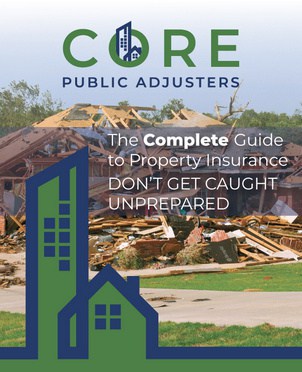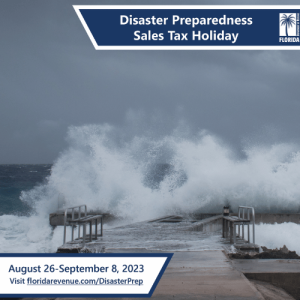Your home is an investment and when something bad happens to it, it can really knock the wind out of you. Filing an insurance claim can be a taxing process if you are not prepared for it. There are certain things you need to do and consider before you make a homeowner’s insurance claim.
As a homeowner with house insurance, you pay a premium in the hopes that your insurer will honor their obligation to you and pay for the damages that are covered. Most insurers pay out as long as you meet the requirements stated in your policy. However, it is important to know that insurance companies are, at the end of the day, businesses, and many consumers have filed complaints against their insurance providers. Their core obligation is to their financial survival and not so much to you. You will find that insurers lean toward paying out as little as possible under the law. Herein lies the challenge for most homeowners.
The best way to increase your chances of receiving a full pay out is by engaging a public adjuster who will act in your interest so that your payout will not be too low. You can also make sure that you have not violated any terms in your policy agreement, so read to it to understand and understand it well.
To help you prepare your insurance claim, we have put together this guide for Florida homeowners. Although we have attempted to be as detailed as possible, this guide is only just an overview of how to go about filing an insurance claim.
Your success and the amount you get from your payout depend on the coverage you have and the damage you experienced. Before we dive into the murky waters of the insurance world, let’s discuss the things you should do before disaster strikes.
What should you do before disaster strikes? Three preventative measures.
The calm before the storm. Before any damage occurs to your home, there are specific measures you need to take. These steps will help you get the most out of any future claims you might make to your insurer. We will go through these preventative measures below.
1. Check your entire home.
Taking inventory of every external and internal area of your home is crucial to you getting a good payout. Taking stock of everything in your home that might be damaged in a storm or lost to thieves, helps you to ride through the claims process much easier.
This involves checking and taking pictures of all your permanent fixtures, your valuables, household goods and furniture. Document everything and get an estimation of how much it would cost you to replace or repair everything. When damage or loss occurs, you can have something concrete that you can show your insurer to process your claim.
2. Maintain your property.
Homeowner’s insurance does not cover improper maintenance or lack thereof. It is your responsibility to ensure that your property is properly maintained, regularly.
Hire qualified contractors to help you address any maintenance issues you might have on your property. If you suffer damage from a peril that is covered by your policy, it is your duty to mitigate the damage. For example, if your roof is damaged, placing temporary protective sheets to prevent further water damage to your property will help, or at least won’t hurt, for a more successful outcome with your insurer.
3. Be prepared.
For some disasters, they may strike without notice. For others, you will have advance warning, such as with hurricanes. In either case, it’s a good idea to keep all of your important paperwork in a secure place, and with you should you need to evacuate. With regard to hurricanes, try to secure your house as best as you can to minimize any damages.[1]
What are the steps to submitting a property insurance claim?
Claiming against your homeowner’s policy comes with certain rules and procedures that you and your insurer need to follow.[2]
Step 1: File a police report, if applicable.
The first step in some circumstances is to file a police report. This is usually for damage that occurs because of theft, burglary or vandalism. This step is unnecessary when you are dealing with damage from a storm or from another source.
Step 2: Contact your insurer immediately.
This step is very important because it allows you to establish what you can claim and what your insurer is obligated to give you. Make sure to give them your personal details, policy number and the date and time you experienced the damage.
Also, get answers to these questions:
- Are you covered from this loss?
- How long will you have to file your claim?
- What documentation will you need for the claim to be processed?
- If you have received estimates for your damage, will your claim exceed the amount you can get from your policy?
If you have hired a public adjuster, then they can make the call to your insurance provider on your behalf. Give your public adjuster as much detail as possible. Your insurer will assign their own adjuster to your case so you may want to fight fire with fire, so to speak. Remember, insurance companies will look out for their own best interests, so you need someone on your side who will do the same for you. Your adjuster will work on your behalf, while theirs will do the same for the insurance provider. Protect yourself against low payouts.
Step 3: Carefully document the damage.
Insurers don’t want to pay off the maximum amount under your policy. If they can legally pay you a smaller amount than what you are owed, they will gladly do so. Your job is to make it hard for your insurer to find loopholes in your claim.
With the help of your public adjuster, document the extent of the damage as much as you can. If you have been taking an inventory of what you had before the damage or loss, this will be a much easier process for you. Remember not to throw away any damaged property without the approval of the insurer’s adjuster. Wait until the claim is settled. Any property damage debris may be evidence in your case.
Make a list of all the cleaning and repair bills you are likely to incur. This includes additional expenses such as hotel or restaurant bills, car and home rental expenses.
Step 4: Secure your home against further damage.
This includes temporarily patching your roof, boarding up broken windows and moving surviving furniture to a safe location. Leaving gaping holes in a roof or broken windows may result in mold, so keep moisture out and check for mold if moisture has gotten in. Showing your insurer that you took the necessary steps to mitigate the damage will give you a better chance at a good payout.[3]
How can a public adjuster help you submit a better insurance claim than you could submit on your own?
Your insurer will assign an adjuster to you at no cost. However, this might not be in your best interest because they work for the insurance company, not for you.
You will pay out of your own pocket for the public adjuster, but it will likely be worth it. According to a report by the Florida State Legislature’s Office of Program Policy Analysis and Government Accountability, “… policyholders received 574% higher compensation for non-hurricane home insurance claims and 747% higher compensation for hurricane-related claims when they used a public adjuster.” [4]
Dealing with the loss of your property is traumatic enough. Receiving all the help you can get from your public adjuster will make this difficult time a lot easier to bear.
Article Resources
[1] This Old House https://www.thisoldhouse.com/natural-disasters/21015235/hurricane-safety-lessons-learned-from-past-storms
[2] Insurance Information Institute https://www.iii.org/article/how-to-file-a-homeowners-claim
[3] Insurance Information Institute https://www.iii.org/article/how-to-file-a-homeowners-claim
[4] Insurance.com https://www.insurance.com/home-and-renters-insurance/filing-a-homeowners-insurance-claim.html







